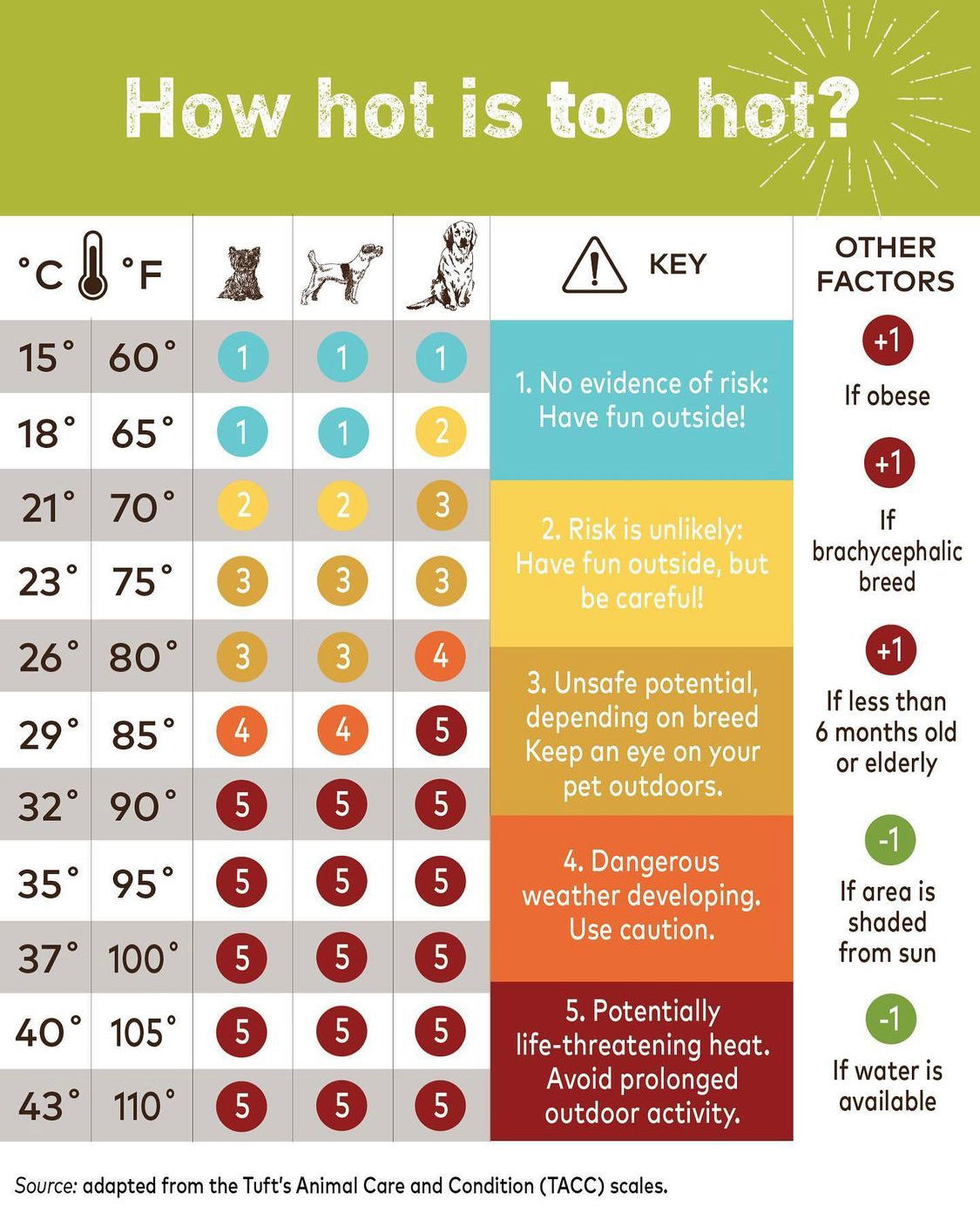It’s Summer time and it’s hot, hot, hot! This year we’re spending a lot more time at home with our pets, going on walks, and hanging together outside. With just a few simple precautions you all can have a wonderful and safe summer.

Watch the Paws!
The summer heat can cause the pavement to be quite hot, even approaching up to 145 degrees! That’s really hot on your dog’s paws. Before you go out for a walk, double check what the pavement heat is.
Place your hand on the pavement for about 10 seconds. If it’s too hot for your hand it’s too hot for your dog’s paws! Try walking earlier in the morning or early evening when the sun’s gone down or try walking in grass, or find a shady section of the sidewalk to walk on.
If your dog’s paws get burned, use a natural soothing remedy like our PawTection Stick.
If your dog is limping, or their paws are red or pink and obviously in distress, make sure you go see your veterinarians to make sure they get the care they need.
Dogs in the Car
You would think that by now people would realize the risks of leaving pets and children in a car even on a nice Spring day but still people don’t realize that the temperature in the car can quickly climb to 120 degrees even with the windows rolled down! Leave your pets at home even when you’re just running a quick errand. When it reaches 70 degrees outside – definitely leave the pets at home. Even a sunny day in the 60’s in a closed car can heat up your pet.
Heat Stroke
This is a very real concern for our pets in the summer and it can happen quickly. It’s extremely life-threatening. Unfortunately, we witnessed a dog with heatstroke at an event last summer and it’s very scary.
Here are some of the common symptoms of heatstroke:
body temperature of 104-110F degrees
excessive panting
dark or bright red tongue and gums
staggering or in a stupor
seizure
bloody diarrhea
vomiting
coma
death
Short-nosed dogs like Bulldogs and Pugs are very susceptible as well as heavy-coated or overweight dogs and dogs with heart or respiratory problems.
Seek veterinary care immediately if you suspect your pet might have heat stroke.
Use cool water but not ice water to cool your pet keeping the temperature no lower than 103 degrees to avoid hypothermia (too cold), which can cause the blood vessels to constrict.
Offer ice cubes to lick until you can see a vet.
Just because your pet seems OK after a bit please take him for a professional evaluation as many issues can occur in the internal organs after heat stroke.
The best cure for heat stroke is prevention.
Overexertion and Running
Exercising with your dog is definitely a joy for both you and your dog but why worry about your dog running in the summer? While you have the opportunity to adjust your running gear for the warmer weather your dog is still running in the same gear they had last winter! Plus we sweat (a lot) in the summer and your dog only has the ability to cool down with the pads of his feet and through panting. Your loyal companion and canine athlete may be in excellent shape but over-heating and heatstroke can be fatal for even the best canine athlete. Adjust your running schedule to the early morning or late evening in the summer. Plus the
Keep plenty of water on hand to keep your pet hydrated. Carry a portable water bowl on your walks and always have water available outside too. Plus use a life preserver when your dog is boating or swimming just as you do with your other family members. Some dogs are naturally not great swimmers plus your dog could be knocked overboard and taking the right precautions could save their life.
Proper Grooming
Keep your pets well groomed in the summer months. Your pet’s coat keeps them warm in the winter and actually helps protect them from the summer sun and even insulates them from the heat. If your dog has a lot of mats or tangles or it’s coat is excessively long and overgrown it could prevent dog from being able to cool themselves properly in the summer.
The Young, The Elderly and The Overweight
A healthy adult dog can regulate their heat, however puppies and older dogs are not as efficient in controlling their own cooling so special precautions must be taken. Overweight dogs and snub-nosed dogs (pugs, bulldogs, frenchies, etc) are especially prone to overheating in the summer. Also high humidity can make if very challenging for any dog to regulate their body heat. Exercise should be very limited on these days and you should make sure that their crate or other rest area is well ventilated.
Travel/Vacation Plans
make sure your microchip and tag information is up-to-date before you leave with your dog on vacation. Also when you arrive at your vacation destination look for a local vet and keep this information handy. You never know when you might need it.
With the appropriate precautions your pet can have a wonderful, fun and safe summer.
.png)
